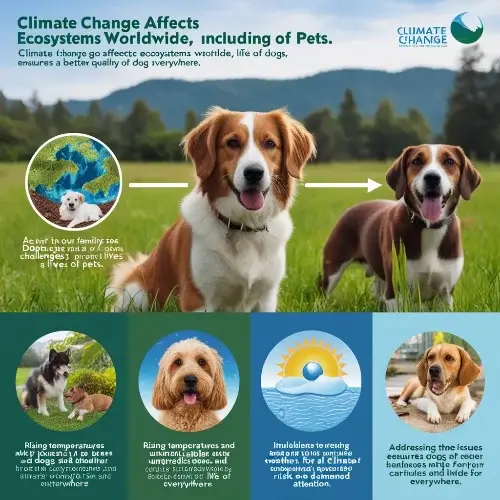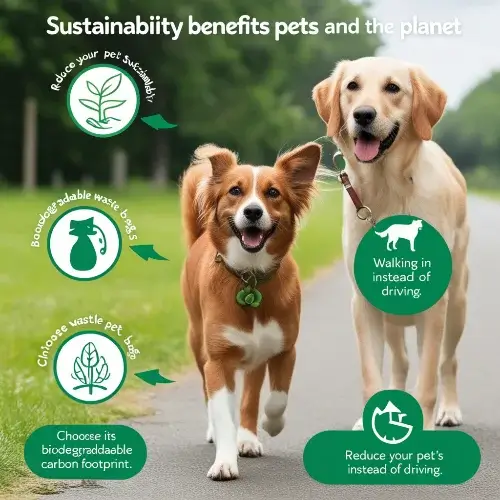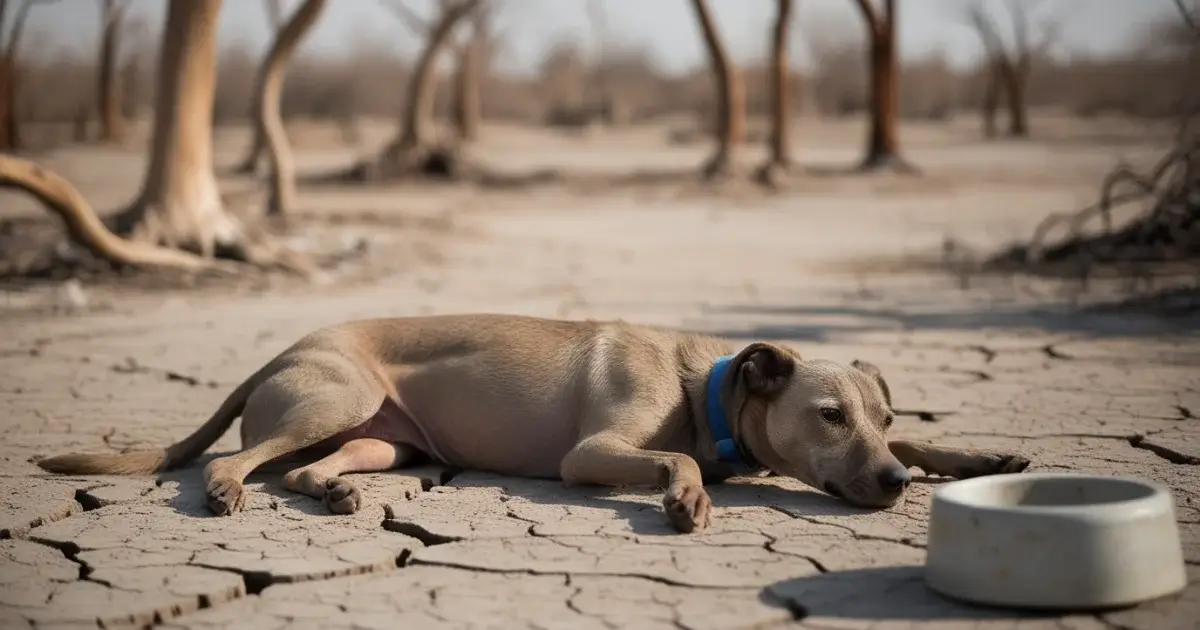Climate Change and Dog Population: Ultimate Eco-friendly Guide
Climate change and dog population are closely connected. As the environment changes, dogs face challenges ranging from health risks to behavioral shifts. Understanding these effects is essential for responsible pet care. Let’s explore the impact of climate change on dogs and how to protect them.
Table of Contents
The impact of Climate Change on Dogs
Overview of Climate Change and Its Relevance to Pets
Climate change affects ecosystems worldwide, including the lives of pets. Dogs, as part of our families, face unique challenges. Rising temperatures and unpredictable weather create risks that demand attention. Addressing these issues ensures a better quality of life for dogs everywhere.

How Rising Temperatures Affect Dog Health
Heat presents serious risks to dogs, especially in warmer climates. Heat stroke and heat-related diseases are leading threats. Symptoms include excessive panting, disorientation, and lethargy. Quick action, like cooling and hydration, is crucial to save their lives.
Warmer weather also encourages increased susceptibility to infections. Ticks and fleas thrive in heat, spreading diseases like Lyme disease and heartworm. Regular preventive treatments reduce these risks.
Behavioral Changes in Dogs Due to Climate Shifts
Extreme weather impacts dogs’ behavior. Altered activity levels are common, as high temperatures limit outdoor play. Some dogs become restless or lethargic during heatwaves.
Unstable weather also creates new stressors leading to anxiety and distress. Storms and environmental disruptions may lead to barking, hiding, or destructive behaviors. Safe, quiet spaces can provide comfort during stressful conditions.
Climate Change and Dog Population
Effects on Exercise and Physical Activity
Weather influences dogs’ exercise habits. Seasonal behavior adjustments occur as dogs avoid activity in extreme conditions. Reduced physical activity may cause weight gain and health problems.
Impacts of extreme weather on outdoor activities include hot surfaces that burn paw pads. Testing surfaces before walks ensures safety. Adjusting walk times to cooler periods keeps dogs comfortable and healthy.
Behavioral Disorders Triggered by Environmental Factors
Environmental stress leads to psychological effects. Older dogs are prone to cognitive dysfunction, which worsens with heat stress. Symptoms include confusion and reduced responsiveness.
Routine disruptions also cause separation anxiety linked to disruptions. Dogs may cling to owners or act out when routines change. Consistent schedules and comforting routines help manage these challenges.
Dog Breeds Adapted to Extreme Weather
Breeds Thriving in Warmer Climates
Some breeds are better suited to hot environments. Characteristics of heat-adapted breeds include short coats and lean frames. Breeds like Greyhounds and Basenjis handle heat well with proper care.
Breeds prone to heat-related illnesses include Bulldogs, Pugs, and other flat-faced dogs. Their breathing difficulties make them more vulnerable to overheating. Owners of these breeds must be extra cautious during hot weather.
Breeds Suited to Cold Environments
Thick-coated breeds, such as Huskies and Malamutes, excel in colder regions. Their thick-coated breeds and their resilience allow them to handle freezing temperatures. However, rising global temperatures pose challenges even for these breeds.
In rapidly warming areas, these dogs risk overheating. Monitoring their activity and ensuring access to cool environments protects their health.
Environmental Impact on Pets and Human Interventions
Increased Risk of Parasite-Borne Diseases
Rising temperatures increase pest populations. The spread of ticks, fleas, and mosquitoes brings higher risks of diseases like heartworm and Rocky Mountain spotted fever. Using preventive medications year-round helps reduce these threats.
Preparing Dogs for Natural Disasters
Climate change increases natural disasters like floods and hurricanes. Emergency planning and supplies are essential for dog safety. Emergency kits should include food, water, medications, and identification. Vaccinations should be up to date to avoid risks in shelters or during travel.
Eco-Friendly Pet Care Practices
Sustainability benefits both pets and the planet. Choose sustainable pet products such as biodegradable waste bags and eco-friendly toys. Reduce your pet’s carbon footprint by walking instead of driving. These small steps help create a greener future.

Fighting for the Future: Addressing Climate Change for Pets
Raising Awareness Among Pet Owners
Pet owners play a key role in combating climate change. Promoting advocacy for eco-friendly practices ensures that more people adopt sustainable habits. Every small change, like conserving resources or reducing waste, helps protect dogs and the environment.
Collaborative Efforts to Mitigate Climate Impact
Experts are finding innovative solutions to address these challenges. Innovations in veterinary care, such as advanced treatments for heat stress, are helping dogs cope with changing climates. Supporting policies for environmental protection ensures these solutions reach more pets globally.
Conclusion
The impact of climate change on dogs highlights the importance of proactive care. By recognizing dog behavior changes due to climate, understanding dog breeds adapted to extreme weather, and embracing sustainable practices, we can protect our pets. Let’s work together to ensure a safe, happy future for all dogs.
FAQs
What are some behavioral changes dogs show due to climate?
Dog behavior changes due to climate include reduced activity during extreme heat and increased anxiety from storms or unstable weather. Providing a calm environment and adjusting exercise routines helps manage these changes.
Which dog breeds are most vulnerable to heat?
Flat-faced breeds like Bulldogs and Pugs are dog breeds adapted to extreme weather poorly suited to heat. Their short noses make it harder to cool down, increasing their risk of overheating. Proper hydration and shade are essential.
How does climate change affect the environmental impact of pets?
The environmental impact on pets rises as the need for resources like cooling systems and pest preventives grows. Choosing sustainable pet products and reducing waste helps lower your pet’s carbon footprint.
What can pet owners do to prepare for climate-related disasters?
Pet owners should include pets in disaster plans by packing emergency kits with food, water, and medications. Vaccinations should be up to date. These steps ensure pet safety during climate-induced emergencies like floods or hurricanes.







